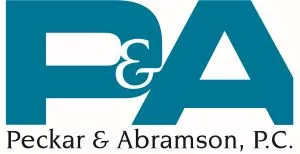This is an update to our January 2008 Client Alert, informing you about two important cases decided by the Florida Supreme Court. These two decisions, U.S. Fire Ins. Co. v. J.S.U.B., Inc. and Auto-Owners Ins. Co. v. PozziWindow Co., resolved previously conflicting Florida law to provide coverage for third-party property damage claims arising from the defective work of subcontractors made pursuant the products-completed operations hazard coverage of a general contractor's commercial general liability ("CGL") insurance policy. On June 12, 2008, the Florida Supreme Court issued yet another opinion in the Pozzi case, to clarify the prior opinion. This most recent opinion broadens coverage in cases of defective work by subcontractors even further.
Despite the original "pro-coverage" resolution of these cases, their effect was somewhat limited as it relates to major property damage claims brought against general contractors because potentially significant portions of the property damage arising from the defective work were not provided coverage. For example, in the case of a subcontractor performing a defective residential window installation, the defectively installed windows themselves did not constitute property damage covered by CGL insurance. Therefore, coverage was limited to damages to other property, such as wallpaper and flooring. In some cases, this limitation could mean that the most costly damages arising from the subcontractor's defective work may very well not be covered.
Now, the Florida Supreme Court has revised the Pozzi opinion in a manner that appreciably increases the potential benefit provided to the general contractor who maintains products completed operations hazard coverage on its CGL insurance policy and/or is named as an additional insured on such a policy. Specifically, the revised Pozzi opinion of June 2008 holds that any property to which there is physical injury as a result of a subcontractor's defective work is covered property damage under the CGL insurance policy with completed-products operations hazard coverage.
What does this mean to the general contractor? The revised opinion illustrates how, under certain circumstances, coverage can include the cost of repairing the subcontractor's defective work, in addition to the property damage resulting from the subcontractor's defective work. Using the Pozzi scenario, the facts and contractual relations must be analyzed to determine whether supplying the windows was part of the subcontractor's scope and whether the windows were themselves defective, were improperly installed, or a combination of the two. The relevant facts and policy provisions will determine the extent to which the cost of the replacement windows themselves, and/or the resulting property damage are covered.
First, we need to look at what is meant by a subcontractor's "work." The standard CGL policy definition of "YourWork," which includes work performed by a subcontractor on the general contractor's behalf, is broadly defined to include operations by the named insured or on the named insured's behalf, including material parts or equipment in connection with the operations. This definition is important to examining how the recently revised Pozzi opinion helps the general contractor. For example, in examining the factual scenario presented by Pozzi - property damage to a residence as a result of defective window installation – we need to pay particular attention to the fact that the windows installed by a subcontractor were in fact not provided by that subcontractor and, rather, were purchased independently by the homeowner. Therefore, if the facts are determined to be that the windows themselves were defective and the installation was performed properly, coverage would not be provided by the general contractor's CGL insurance policy because the defective windows were independently purchased and provided by the homeowner and not part of the work performed by the subcontractor. Distinguish this from a factual scenario in which the installing subcontractor provided the defective windows. In such a case, property damage occurring at the residence (e.g., damaged wallpaper and flooring) would be covered by the general contractor's CGL insurance policy (even if the installation was performed properly) because the provision of the defective windows by the subcontractor would qualify as defective work. Finally, if the actual installation of the windows is performed deficiently and/or defectively by the subcontractor, coverage should be provided by the general contractor's CGL insurance policy, irrespective of whether the windows themselves were defective, which would only have bearing on what property damage is covered (e.g., the windows and other property such as wallpaper and flooring or just the other property such as wallpaper or flooring).
The court's revised opinion in the Pozzi case further demonstrates the benefit of CGL insurance policy coverage to the general contractor faced with a third-party property damage claim. Every claim requires careful analysis based upon both the specific facts of the case and the particular policy forms, endorsements and exclusions of the applicable insurance. Therefore, we welcome you to contact us so that we may assist you in utilizing available CGL insurance coverage most effectively.
The content of this article is intended to provide a general guide to the subject matter. Specialist advice should be sought about your specific circumstances



